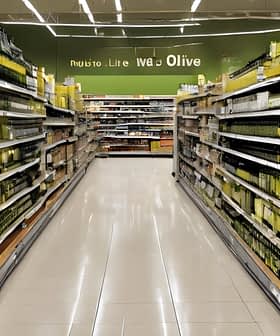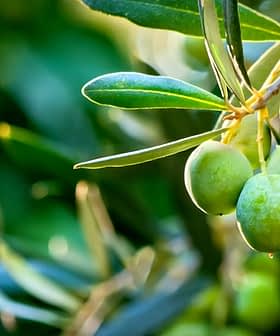Higher prices and stiff competition led to a 7 percent decline in global olive oil consumption, according to the latest figures released by the International Olive Council (IOC).
World consumption for the 2014/15 crop year was assessed at 2.85 million tons, while in Europe consumption fell by 11 percent to 1.5 million tons, accounting for most of the downturn.
Consumption was stable in most of the other IOC member countries with the exception of Turkey where it rose 40 percent and in Algeria where it increased 33 percent.
Japan saw a 9 percent rise in usage over the previous year thanks to ongoing marketing and promotional campaigns which, the IOC said, are driving sales.
The Council of Members met in Madrid recently to rubber stamp world olive oil balances for the 2014/15 and 2015/16 crop seasons.
On the production side, the IOC confirmed the dismal output of a record down year that saw worldwide output drop to 2.4 million tons — or about 450,000 tons less than the world consumed — resulting in low stocks and higher prices that characterize the current market.
EU olive oil production was assessed at 1.4 million tons, recording a decrease of 42 percent on the previous season.
Spain was the largest olive oil producer with 841,200 tons, followed by Tunisia (340,000), Greece (300,000), Italy (220,000), Turkey (170,000), Morocco (120,000), Syria (105,000), Algeria (69,500), Portugal (61,000 tons), Jordan (23,000), Egypt and Lebanon (21,000 tons each), Israel (17,500), Libya (15,500), Albania (11,000), Cyprus (6,200), Argentina (6,000) and Iran (4,500), France (1,900), Croatia (1,000) and Slovenia (200).
For this year (2015/2016), the IOC estimated production to reach 2,988,500 tons, a 22 percent increase. “This forecast positions production halfway between the levels of 2014/15 and 2013/14.” it said.
“Further itemization shows production forecasts of 1.3 million for Spain, 350,000 tons for Italy, 300,000 tons for Greece and 82,000 for Portugal. Smaller tonnages are forecast for the rest of the EU producers.”
Elsewhere in other IOC member countries such as Turkey, Tunisia, Israel, Lebanon and Albania, the outlook is poorer with predictions of an overall 8 percent production decrease compared with 2014/15.
Syrian production is forecast to increase to 215,000 tons, in Morocco 130,000 tons, Algeria 73,500 tons, Jordan 29,000 tons, Argentina and Egypt 25,000 tons.
- IOC November 2015 Newsletter (PDF)








